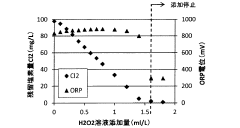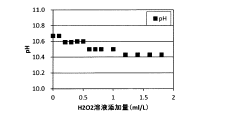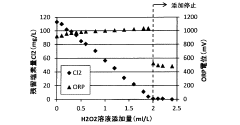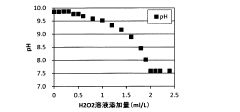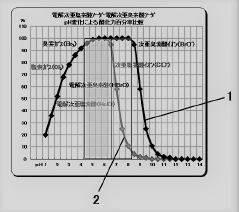Evaluating Hypochlorous Acid's Performance in Municipal Waste Treatment
AUG 4, 20259 MIN READ
Generate Your Research Report Instantly with AI Agent
Patsnap Eureka helps you evaluate technical feasibility & market potential.
HOCl in Waste Treatment: Background and Objectives
Hypochlorous acid (HOCl) has emerged as a promising agent in municipal waste treatment, offering a potential solution to the growing challenges of waste management in urban areas. The evolution of this technology can be traced back to the early 20th century when chlorine-based disinfectants were first introduced in water treatment. However, it is only in recent decades that the specific advantages of HOCl have been recognized and harnessed for waste treatment applications.
The primary objective of utilizing HOCl in municipal waste treatment is to develop a more efficient, environmentally friendly, and cost-effective method for managing urban waste streams. This technology aims to address several key issues in current waste treatment processes, including the reduction of harmful pathogens, minimization of odor, and improvement of overall treatment efficiency.
HOCl's unique properties make it particularly suitable for waste treatment. As a weak acid, it possesses strong oxidizing capabilities while remaining relatively safe for human contact and environmental release. This balance of effectiveness and safety has driven interest in its application across various sectors of waste management, from sewage treatment to solid waste processing.
The technological trajectory of HOCl in waste treatment has been marked by significant advancements in production methods, application techniques, and understanding of its chemical interactions within complex waste matrices. Early challenges in stabilizing HOCl solutions have given way to more robust formulations, enabling broader implementation in municipal settings.
Current research and development efforts are focused on optimizing HOCl generation systems, improving its integration with existing waste treatment infrastructure, and exploring novel applications in areas such as biosolids management and landfill leachate treatment. The goal is to create more sustainable and resilient waste management systems capable of handling the increasing volumes and complexities of urban waste.
As municipalities worldwide grapple with stricter environmental regulations and growing public awareness of waste-related issues, the demand for innovative treatment solutions has intensified. HOCl technology is positioned at the intersection of these trends, offering a potential pathway to more sustainable urban development and improved public health outcomes.
The evolution of HOCl in waste treatment reflects broader shifts in environmental technology, emphasizing the importance of solutions that are not only effective but also align with principles of green chemistry and circular economy. As research continues, the full potential of HOCl in transforming municipal waste management practices is yet to be realized, promising exciting developments in the years to come.
The primary objective of utilizing HOCl in municipal waste treatment is to develop a more efficient, environmentally friendly, and cost-effective method for managing urban waste streams. This technology aims to address several key issues in current waste treatment processes, including the reduction of harmful pathogens, minimization of odor, and improvement of overall treatment efficiency.
HOCl's unique properties make it particularly suitable for waste treatment. As a weak acid, it possesses strong oxidizing capabilities while remaining relatively safe for human contact and environmental release. This balance of effectiveness and safety has driven interest in its application across various sectors of waste management, from sewage treatment to solid waste processing.
The technological trajectory of HOCl in waste treatment has been marked by significant advancements in production methods, application techniques, and understanding of its chemical interactions within complex waste matrices. Early challenges in stabilizing HOCl solutions have given way to more robust formulations, enabling broader implementation in municipal settings.
Current research and development efforts are focused on optimizing HOCl generation systems, improving its integration with existing waste treatment infrastructure, and exploring novel applications in areas such as biosolids management and landfill leachate treatment. The goal is to create more sustainable and resilient waste management systems capable of handling the increasing volumes and complexities of urban waste.
As municipalities worldwide grapple with stricter environmental regulations and growing public awareness of waste-related issues, the demand for innovative treatment solutions has intensified. HOCl technology is positioned at the intersection of these trends, offering a potential pathway to more sustainable urban development and improved public health outcomes.
The evolution of HOCl in waste treatment reflects broader shifts in environmental technology, emphasizing the importance of solutions that are not only effective but also align with principles of green chemistry and circular economy. As research continues, the full potential of HOCl in transforming municipal waste management practices is yet to be realized, promising exciting developments in the years to come.
Market Analysis for HOCl-based Waste Treatment Solutions
The market for hypochlorous acid (HOCl) in municipal waste treatment is experiencing significant growth, driven by increasing environmental concerns and stricter regulations on waste management. HOCl-based solutions offer several advantages over traditional waste treatment methods, including higher efficiency, lower environmental impact, and cost-effectiveness.
The global municipal waste treatment market is projected to reach substantial value in the coming years, with HOCl-based solutions expected to capture an increasing share. This growth is attributed to the rising urban population, rapid industrialization, and growing awareness of the importance of proper waste management in developing countries.
In the municipal waste treatment sector, HOCl is primarily used for disinfection, odor control, and sludge reduction. Its effectiveness in neutralizing a wide range of pathogens and contaminants makes it an attractive option for wastewater treatment plants, landfills, and other waste management facilities. The demand for HOCl-based solutions is particularly strong in regions facing water scarcity and stringent environmental regulations.
The market for HOCl in waste treatment is segmented by application, including wastewater treatment, solid waste management, and industrial waste treatment. Wastewater treatment currently holds the largest market share, driven by the need for efficient and environmentally friendly disinfection methods. However, the solid waste management segment is expected to witness the highest growth rate due to increasing concerns about landfill emissions and the need for more sustainable waste disposal practices.
Geographically, North America and Europe are the leading markets for HOCl-based waste treatment solutions, owing to their advanced infrastructure and stringent environmental regulations. However, the Asia-Pacific region is expected to emerge as a lucrative market, driven by rapid urbanization, industrialization, and increasing government initiatives for sustainable waste management practices.
Key factors driving the adoption of HOCl in municipal waste treatment include its broad-spectrum antimicrobial properties, low toxicity, and ability to reduce odors effectively. Additionally, the growing emphasis on sustainable and eco-friendly waste management solutions is expected to further boost the demand for HOCl-based treatments.
Despite the positive outlook, the market faces challenges such as the need for specialized equipment for on-site generation of HOCl and competition from alternative disinfection technologies. However, ongoing research and development efforts are focused on improving the stability and shelf-life of HOCl solutions, which is expected to address some of these challenges and further drive market growth.
The global municipal waste treatment market is projected to reach substantial value in the coming years, with HOCl-based solutions expected to capture an increasing share. This growth is attributed to the rising urban population, rapid industrialization, and growing awareness of the importance of proper waste management in developing countries.
In the municipal waste treatment sector, HOCl is primarily used for disinfection, odor control, and sludge reduction. Its effectiveness in neutralizing a wide range of pathogens and contaminants makes it an attractive option for wastewater treatment plants, landfills, and other waste management facilities. The demand for HOCl-based solutions is particularly strong in regions facing water scarcity and stringent environmental regulations.
The market for HOCl in waste treatment is segmented by application, including wastewater treatment, solid waste management, and industrial waste treatment. Wastewater treatment currently holds the largest market share, driven by the need for efficient and environmentally friendly disinfection methods. However, the solid waste management segment is expected to witness the highest growth rate due to increasing concerns about landfill emissions and the need for more sustainable waste disposal practices.
Geographically, North America and Europe are the leading markets for HOCl-based waste treatment solutions, owing to their advanced infrastructure and stringent environmental regulations. However, the Asia-Pacific region is expected to emerge as a lucrative market, driven by rapid urbanization, industrialization, and increasing government initiatives for sustainable waste management practices.
Key factors driving the adoption of HOCl in municipal waste treatment include its broad-spectrum antimicrobial properties, low toxicity, and ability to reduce odors effectively. Additionally, the growing emphasis on sustainable and eco-friendly waste management solutions is expected to further boost the demand for HOCl-based treatments.
Despite the positive outlook, the market faces challenges such as the need for specialized equipment for on-site generation of HOCl and competition from alternative disinfection technologies. However, ongoing research and development efforts are focused on improving the stability and shelf-life of HOCl solutions, which is expected to address some of these challenges and further drive market growth.
Current Challenges in Municipal Waste Treatment
Municipal waste treatment faces numerous challenges in the current landscape, primarily due to increasing urbanization, population growth, and changing consumption patterns. One of the most pressing issues is the sheer volume of waste generated, which often overwhelms existing treatment facilities and infrastructure. Many municipalities struggle to keep pace with the growing waste stream, leading to inefficient processing and potential environmental hazards.
The complexity of waste composition presents another significant challenge. Modern consumer goods often contain a mix of materials, making separation and recycling more difficult. This complexity is further compounded by the presence of hazardous substances in municipal waste, such as electronic waste, batteries, and certain household chemicals. These materials require specialized handling and treatment processes, which many facilities are not adequately equipped to manage.
Inadequate waste segregation at the source remains a persistent problem. Despite efforts to promote recycling and proper waste disposal, many households and businesses fail to separate their waste effectively. This leads to contamination of recyclable materials and complicates downstream treatment processes. The lack of proper segregation also increases the likelihood of recyclable materials ending up in landfills or incinerators, reducing resource recovery rates.
Financial constraints pose a significant barrier to improving municipal waste treatment systems. Upgrading existing facilities or implementing new technologies often requires substantial capital investment, which many municipalities struggle to secure. This financial limitation can result in the continued use of outdated or inefficient treatment methods, hindering progress towards more sustainable waste management practices.
Environmental concerns associated with traditional waste treatment methods present ongoing challenges. Landfills, while still widely used, contribute to greenhouse gas emissions and pose risks of soil and groundwater contamination. Incineration, another common treatment method, raises concerns about air pollution and the release of toxic substances. Balancing the need for effective waste treatment with environmental protection remains a complex issue for many municipalities.
The regulatory landscape surrounding waste treatment is becoming increasingly stringent, placing additional pressure on municipalities to improve their practices. Compliance with evolving environmental standards and waste management regulations often requires significant operational changes and investments. This regulatory pressure, while necessary for environmental protection, can create short-term challenges for municipalities struggling to adapt their existing systems.
Lastly, public perception and community engagement present ongoing challenges in municipal waste treatment. Implementing new waste management facilities or technologies often faces resistance from local communities due to concerns about odors, traffic, or perceived health risks. Overcoming these "Not In My Backyard" (NIMBY) attitudes and fostering community support for improved waste treatment initiatives remains a critical challenge for many municipalities.
The complexity of waste composition presents another significant challenge. Modern consumer goods often contain a mix of materials, making separation and recycling more difficult. This complexity is further compounded by the presence of hazardous substances in municipal waste, such as electronic waste, batteries, and certain household chemicals. These materials require specialized handling and treatment processes, which many facilities are not adequately equipped to manage.
Inadequate waste segregation at the source remains a persistent problem. Despite efforts to promote recycling and proper waste disposal, many households and businesses fail to separate their waste effectively. This leads to contamination of recyclable materials and complicates downstream treatment processes. The lack of proper segregation also increases the likelihood of recyclable materials ending up in landfills or incinerators, reducing resource recovery rates.
Financial constraints pose a significant barrier to improving municipal waste treatment systems. Upgrading existing facilities or implementing new technologies often requires substantial capital investment, which many municipalities struggle to secure. This financial limitation can result in the continued use of outdated or inefficient treatment methods, hindering progress towards more sustainable waste management practices.
Environmental concerns associated with traditional waste treatment methods present ongoing challenges. Landfills, while still widely used, contribute to greenhouse gas emissions and pose risks of soil and groundwater contamination. Incineration, another common treatment method, raises concerns about air pollution and the release of toxic substances. Balancing the need for effective waste treatment with environmental protection remains a complex issue for many municipalities.
The regulatory landscape surrounding waste treatment is becoming increasingly stringent, placing additional pressure on municipalities to improve their practices. Compliance with evolving environmental standards and waste management regulations often requires significant operational changes and investments. This regulatory pressure, while necessary for environmental protection, can create short-term challenges for municipalities struggling to adapt their existing systems.
Lastly, public perception and community engagement present ongoing challenges in municipal waste treatment. Implementing new waste management facilities or technologies often faces resistance from local communities due to concerns about odors, traffic, or perceived health risks. Overcoming these "Not In My Backyard" (NIMBY) attitudes and fostering community support for improved waste treatment initiatives remains a critical challenge for many municipalities.
Existing HOCl Application Methods in Waste Treatment
01 Antimicrobial efficacy of hypochlorous acid
Hypochlorous acid demonstrates strong antimicrobial properties, effectively eliminating a wide range of pathogens including bacteria, viruses, and fungi. Its performance as a disinfectant is attributed to its ability to penetrate cell membranes and disrupt cellular processes. This makes it suitable for various applications in healthcare, food safety, and water treatment.- Antimicrobial efficacy of hypochlorous acid: Hypochlorous acid demonstrates strong antimicrobial properties, effectively eliminating a wide range of pathogens including bacteria, viruses, and fungi. Its performance as a disinfectant is attributed to its ability to penetrate cell membranes and disrupt cellular processes. This makes it suitable for various applications in healthcare, food safety, and water treatment.
- Stability and shelf life of hypochlorous acid solutions: The performance of hypochlorous acid is influenced by its stability in solution. Research focuses on methods to enhance the shelf life and maintain the efficacy of hypochlorous acid preparations. Factors such as pH, temperature, and storage conditions are crucial in preserving its active properties over time. Stabilized formulations have been developed to extend the usability of hypochlorous acid products.
- Environmental impact and safety of hypochlorous acid: Hypochlorous acid is considered environmentally friendly due to its rapid breakdown into non-toxic components. Its performance as a safe alternative to traditional chemical disinfectants is notable, with minimal risk of harmful residues. Studies have shown low toxicity to humans and animals when used as directed, making it suitable for a wide range of applications including sensitive environments.
- Application methods and delivery systems for hypochlorous acid: The performance of hypochlorous acid can be optimized through various application methods and delivery systems. These include sprays, fogging systems, and electrolyzed water generators. Research has focused on developing efficient ways to produce and apply hypochlorous acid on-site, ensuring its effectiveness in diverse settings such as healthcare facilities, agriculture, and industrial cleaning.
- Synergistic effects of hypochlorous acid with other compounds: Studies have explored the potential synergistic effects of combining hypochlorous acid with other compounds to enhance its performance. These combinations aim to improve antimicrobial efficacy, extend stability, or target specific pathogens. Research in this area has led to the development of novel formulations with enhanced properties for specialized applications in medical, industrial, and consumer products.
02 Stability and storage of hypochlorous acid solutions
The performance of hypochlorous acid is influenced by its stability in solution. Research focuses on methods to enhance its shelf life and maintain its efficacy over time. Factors such as pH, temperature, and exposure to light affect the stability of hypochlorous acid solutions. Improved formulations and storage conditions are being developed to prolong its active lifespan.Expand Specific Solutions03 Environmental impact and safety of hypochlorous acid
Hypochlorous acid is considered environmentally friendly due to its rapid breakdown into non-toxic components. It performs well in terms of safety for human use and environmental applications. Studies show low toxicity and minimal residual effects, making it a preferred choice for various disinfection needs where environmental concerns are paramount.Expand Specific Solutions04 Application methods for optimizing hypochlorous acid performance
The effectiveness of hypochlorous acid can be enhanced through various application methods. These include electrolyzed water systems, misting devices, and specialized sprayers. Research is ongoing to develop innovative delivery systems that maximize the contact between hypochlorous acid and target surfaces or organisms, thereby improving its overall performance in real-world scenarios.Expand Specific Solutions05 Synergistic effects with other compounds
Studies explore the combination of hypochlorous acid with other substances to enhance its performance. Synergistic effects have been observed when used in conjunction with certain surfactants, organic acids, or other antimicrobial agents. These combinations can lead to improved efficacy, extended activity, or broader spectrum of action against various pathogens and contaminants.Expand Specific Solutions
Key Players in HOCl Production and Waste Treatment Industry
The market for hypochlorous acid in municipal waste treatment is in a growth phase, driven by increasing environmental regulations and demand for sustainable solutions. The global market size is projected to expand significantly in the coming years, with a compound annual growth rate expected to be in the double digits. Technologically, the field is advancing rapidly, with companies like WIAB WATER INNOVATION AB, Annihilare Medical Systems, and Aquaox leading innovation in production methods and application techniques. Established players such as China Petroleum & Chemical Corp. and Industrie De Nora SpA are leveraging their resources to scale up production and improve efficiency. Research institutions like Nanjing Tech University and Tongji University are contributing to technological advancements, potentially accelerating the maturation of this technology in waste treatment applications.
China Petroleum & Chemical Corp.
Technical Solution: China Petroleum & Chemical Corp. (Sinopec) has developed an innovative HOCl generation system for municipal waste treatment that integrates with their existing petrochemical infrastructure. Their approach utilizes byproducts from petroleum refining processes as precursors for HOCl production, creating a more sustainable and cost-effective solution[10]. Sinopec's system employs advanced catalytic oxidation techniques to convert these precursors into high-purity HOCl with concentrations up to 1500 ppm[11]. The company has also implemented a sophisticated distribution network that allows for centralized production and efficient delivery to multiple treatment facilities. Sinopec's research has focused on optimizing the stability of HOCl in various environmental conditions, resulting in formulations that maintain efficacy for up to 45 days under proper storage conditions[12].
Strengths: Utilization of existing petrochemical infrastructure; high-purity HOCl production; extensive distribution network. Weaknesses: Dependence on petroleum refining byproducts; may face challenges in regions with strict regulations on petrochemical-derived products.
Aquaox, Inc.
Technical Solution: Aquaox, Inc. has pioneered a unique approach to HOCl generation for municipal waste treatment using their patented Electro-Chemical Activation (ECA) technology. This system produces a highly effective HOCl solution with a neutral pH (6.5-7.5) and an oxidation-reduction potential (ORP) of +800 to +1000 mV[7]. Aquaox's technology allows for the production of HOCl concentrations ranging from 10 to 1000 ppm, adaptable to various treatment needs. The company's systems are designed for scalability, with modular units capable of producing from 100 to 10,000 gallons of HOCl solution per day[8]. Aquaox has also developed a proprietary stabilization process that extends the shelf life of their HOCl solution to up to 30 days, addressing one of the key challenges in HOCl utilization[9].
Strengths: Scalable and modular design; extended HOCl stability; high ORP for effective disinfection. Weaknesses: May require more frequent replenishment of salt and water compared to some other systems; potential for electrode degradation over time.
Core Innovations in HOCl Synthesis and Application
Reduction treatment method of waste water
PatentActiveJP2018167238A
Innovation
- A wastewater treatment method using hydrogen peroxide solution is applied, with the optimal amount determined by measuring oxidation-reduction potential, to remove hypochlorous acid without increasing sulfate ion concentration.
Wastewater treatment method
PatentInactiveJP2023074332A
Innovation
- A wastewater treatment method that involves adding bromide ions to hypochlorous acid-containing water to convert at least part of it to hypobromous acid in a neutral pH range of 6 to 8.5, and electrolyzing the water in the presence of ozone to generate active oxygen radicals, which are then used to treat the wastewater.
Environmental Impact Assessment of HOCl Usage
The environmental impact assessment of hypochlorous acid (HOCl) usage in municipal waste treatment is a critical aspect of evaluating its overall performance and sustainability. HOCl, known for its strong oxidizing properties, has shown promising results in waste treatment applications. However, its widespread adoption necessitates a comprehensive analysis of its environmental implications.
One of the primary environmental benefits of HOCl in waste treatment is its ability to effectively disinfect and neutralize harmful pathogens without producing toxic by-products. Unlike chlorine-based disinfectants, HOCl breaks down into harmless compounds, primarily water and salt, minimizing the risk of harmful residuals in treated effluents. This characteristic significantly reduces the potential for negative impacts on aquatic ecosystems and downstream water bodies.
The production and use of HOCl also demonstrate a lower carbon footprint compared to traditional chemical treatments. The on-site generation of HOCl through electrolysis of salt water reduces transportation and storage requirements, thereby decreasing associated greenhouse gas emissions. Additionally, the energy-efficient production process contributes to overall environmental sustainability in waste treatment operations.
However, the environmental assessment must also consider potential drawbacks. The production of HOCl requires electricity, and the environmental impact of this energy consumption depends on the local power generation mix. In regions heavily reliant on fossil fuels, the indirect emissions associated with HOCl production could be significant. Therefore, coupling HOCl generation with renewable energy sources could further enhance its environmental profile.
Another consideration is the effect of HOCl on the microbial communities essential for biological waste treatment processes. While HOCl's disinfection properties are beneficial, excessive use could potentially disrupt the delicate balance of beneficial microorganisms in treatment systems. Careful dosing and monitoring are necessary to maintain optimal treatment efficiency without compromising the biological components of waste treatment.
The impact of HOCl on water chemistry is another crucial aspect of the environmental assessment. Although HOCl is less likely to form harmful disinfection by-products compared to chlorine, long-term effects on water quality parameters such as pH, dissolved oxygen, and nutrient levels should be closely monitored. This monitoring ensures that the treated effluent meets environmental standards and does not adversely affect receiving water bodies.
In conclusion, the environmental impact assessment of HOCl usage in municipal waste treatment reveals a generally positive outlook. Its effectiveness in pathogen reduction, coupled with minimal harmful residuals and a relatively low carbon footprint, positions HOCl as an environmentally friendly option. However, ongoing research and monitoring are essential to fully understand and mitigate any potential long-term environmental effects, ensuring that HOCl remains a sustainable solution for municipal waste treatment.
One of the primary environmental benefits of HOCl in waste treatment is its ability to effectively disinfect and neutralize harmful pathogens without producing toxic by-products. Unlike chlorine-based disinfectants, HOCl breaks down into harmless compounds, primarily water and salt, minimizing the risk of harmful residuals in treated effluents. This characteristic significantly reduces the potential for negative impacts on aquatic ecosystems and downstream water bodies.
The production and use of HOCl also demonstrate a lower carbon footprint compared to traditional chemical treatments. The on-site generation of HOCl through electrolysis of salt water reduces transportation and storage requirements, thereby decreasing associated greenhouse gas emissions. Additionally, the energy-efficient production process contributes to overall environmental sustainability in waste treatment operations.
However, the environmental assessment must also consider potential drawbacks. The production of HOCl requires electricity, and the environmental impact of this energy consumption depends on the local power generation mix. In regions heavily reliant on fossil fuels, the indirect emissions associated with HOCl production could be significant. Therefore, coupling HOCl generation with renewable energy sources could further enhance its environmental profile.
Another consideration is the effect of HOCl on the microbial communities essential for biological waste treatment processes. While HOCl's disinfection properties are beneficial, excessive use could potentially disrupt the delicate balance of beneficial microorganisms in treatment systems. Careful dosing and monitoring are necessary to maintain optimal treatment efficiency without compromising the biological components of waste treatment.
The impact of HOCl on water chemistry is another crucial aspect of the environmental assessment. Although HOCl is less likely to form harmful disinfection by-products compared to chlorine, long-term effects on water quality parameters such as pH, dissolved oxygen, and nutrient levels should be closely monitored. This monitoring ensures that the treated effluent meets environmental standards and does not adversely affect receiving water bodies.
In conclusion, the environmental impact assessment of HOCl usage in municipal waste treatment reveals a generally positive outlook. Its effectiveness in pathogen reduction, coupled with minimal harmful residuals and a relatively low carbon footprint, positions HOCl as an environmentally friendly option. However, ongoing research and monitoring are essential to fully understand and mitigate any potential long-term environmental effects, ensuring that HOCl remains a sustainable solution for municipal waste treatment.
Regulatory Framework for HOCl in Waste Treatment
The regulatory framework for hypochlorous acid (HOCl) in waste treatment is a complex and evolving landscape that varies across jurisdictions. In the United States, the Environmental Protection Agency (EPA) plays a crucial role in regulating the use of HOCl in municipal waste treatment facilities. The EPA's National Pollutant Discharge Elimination System (NPDES) program sets guidelines for the discharge of treated wastewater, including limits on residual chlorine compounds.
The European Union has established the Water Framework Directive (WFD) and the Urban Waste Water Treatment Directive (UWWTD), which provide overarching regulations for water quality and waste treatment. These directives do not specifically mention HOCl but set standards for effluent quality that indirectly affect its use. Member states are responsible for implementing these directives through national legislation, leading to variations in HOCl regulations across EU countries.
In Asia, countries like Japan and South Korea have developed their own regulatory frameworks for water treatment chemicals. Japan's Ministry of Health, Labour and Welfare has established guidelines for the use of chlorine-based disinfectants in water treatment, including HOCl. South Korea's Ministry of Environment regulates the use of HOCl through its Water Quality and Ecosystem Conservation Act.
Globally, the World Health Organization (WHO) provides guidelines for drinking water quality and wastewater treatment, which many countries use as a basis for their national regulations. While these guidelines do not specifically address HOCl, they set standards for disinfection by-products and residual disinfectants that influence HOCl usage.
The regulatory landscape also includes safety and handling regulations for HOCl production and storage. In the United States, the Occupational Safety and Health Administration (OSHA) sets standards for workplace safety related to HOCl handling. Similarly, the European Chemicals Agency (ECHA) regulates the registration, evaluation, authorization, and restriction of chemicals, including HOCl, under the REACH regulation.
As environmental concerns grow, regulations are becoming more stringent regarding the use of chemical disinfectants in waste treatment. Many jurisdictions are implementing stricter limits on disinfection by-products and encouraging the adoption of alternative treatment methods. This trend is likely to impact the future regulatory framework for HOCl in municipal waste treatment, potentially leading to more comprehensive guidelines and monitoring requirements.
The European Union has established the Water Framework Directive (WFD) and the Urban Waste Water Treatment Directive (UWWTD), which provide overarching regulations for water quality and waste treatment. These directives do not specifically mention HOCl but set standards for effluent quality that indirectly affect its use. Member states are responsible for implementing these directives through national legislation, leading to variations in HOCl regulations across EU countries.
In Asia, countries like Japan and South Korea have developed their own regulatory frameworks for water treatment chemicals. Japan's Ministry of Health, Labour and Welfare has established guidelines for the use of chlorine-based disinfectants in water treatment, including HOCl. South Korea's Ministry of Environment regulates the use of HOCl through its Water Quality and Ecosystem Conservation Act.
Globally, the World Health Organization (WHO) provides guidelines for drinking water quality and wastewater treatment, which many countries use as a basis for their national regulations. While these guidelines do not specifically address HOCl, they set standards for disinfection by-products and residual disinfectants that influence HOCl usage.
The regulatory landscape also includes safety and handling regulations for HOCl production and storage. In the United States, the Occupational Safety and Health Administration (OSHA) sets standards for workplace safety related to HOCl handling. Similarly, the European Chemicals Agency (ECHA) regulates the registration, evaluation, authorization, and restriction of chemicals, including HOCl, under the REACH regulation.
As environmental concerns grow, regulations are becoming more stringent regarding the use of chemical disinfectants in waste treatment. Many jurisdictions are implementing stricter limits on disinfection by-products and encouraging the adoption of alternative treatment methods. This trend is likely to impact the future regulatory framework for HOCl in municipal waste treatment, potentially leading to more comprehensive guidelines and monitoring requirements.
Unlock deeper insights with Patsnap Eureka Quick Research — get a full tech report to explore trends and direct your research. Try now!
Generate Your Research Report Instantly with AI Agent
Supercharge your innovation with Patsnap Eureka AI Agent Platform!
